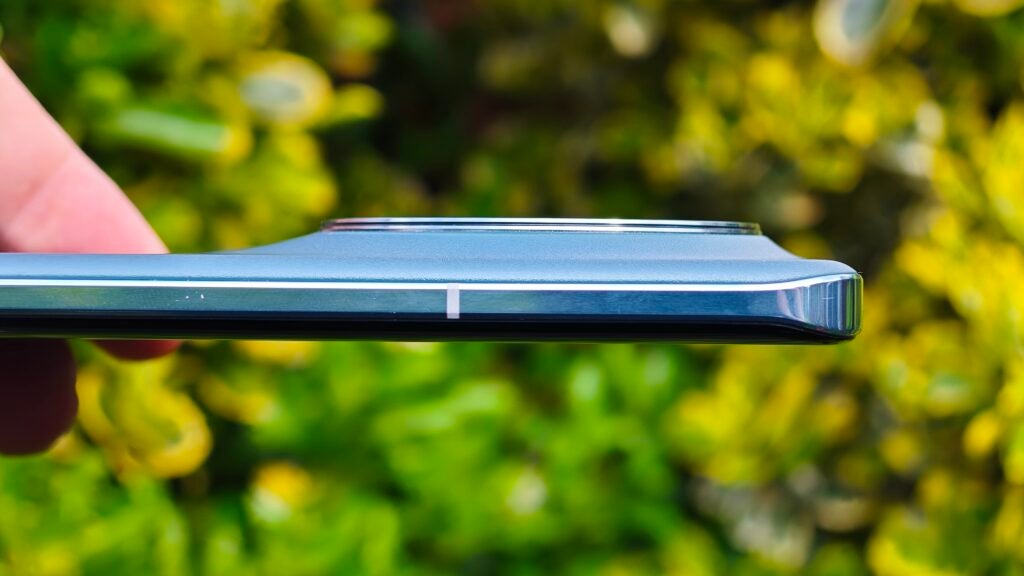Verdict
The Honor Magic 5 Pro is a solid all-in-one package with features that rivals some of the most popular smartphones at a much lower price, coming in at just £949 with a whopping 512GB of storage onboard. It doesn’t always hit the mark, but there’s certainly a lot to like here.
Pros
- IR-enabled 3D facial recognition
- Top-end performance
- Triple 50MP camera setup
- All-day battery life
Cons
- Can’t record video using ultrawide lens
- No Portrait mode filters
- Odd speaker placement
- Poor 10x and 100x zoom performance
-
Huge batteryWith a 5,100mAh battery, the Honor Magic 5 Pro lasts all day and then some. -
Falcon Capture technologyHonor’s Falcon Capture technology allows you to take blur-free photos of fast-moving subjects like dogs and cars. -
Great curved designThe Honor Magic 5 Pro’s curvy design feels great in the hand despite a 6.82-inch display.
Introduction
Honor has well and truly shaken up the flagship smartphone market with the Honor Magic 5 Pro, a smartphone that’s every bit as premium as the likes of the Samsung Galaxy S23 Ultra without the associated price tag.
However, Honor doesn’t have the same brand recognition as Android manufacturers like Samsung and OnePlus in the Western market, so the question is, is there enough here to tempt unfamiliar Android fans?
I’ve spent the past few weeks using Honor’s 2023 flagship, and I’ve been pleasantly surprised by the experience on offer, from the capable camera hardware to the stunning display experience and even the software, which has some genuinely useful tweaks.
The best part? It massively undercuts most of the flagship competition, coming in at an attractive £949 with a whopping 512GB of storage. For context, the 512GB Samsung Galaxy S23 Ultra comes in at £1399/$1379 while the iPhone 15 Pro Max comes in at £1399/$1399.
Design and display
- Curvy, premium design
- Odd stereo speaker setup
- Top-end 6.82-inch OLED display
If there is one word to describe Honor’s Magic 5 Pro, it’d be “curvy”.
The phone is curvy in nearly every sense of the word, from the curved corners to the quad-curved display to the curved camera housing on the rear that Honor says is inspired by the Gaudi Curve, a popular style of architecture. Does curve even sound like a word any more? I’m not sure.
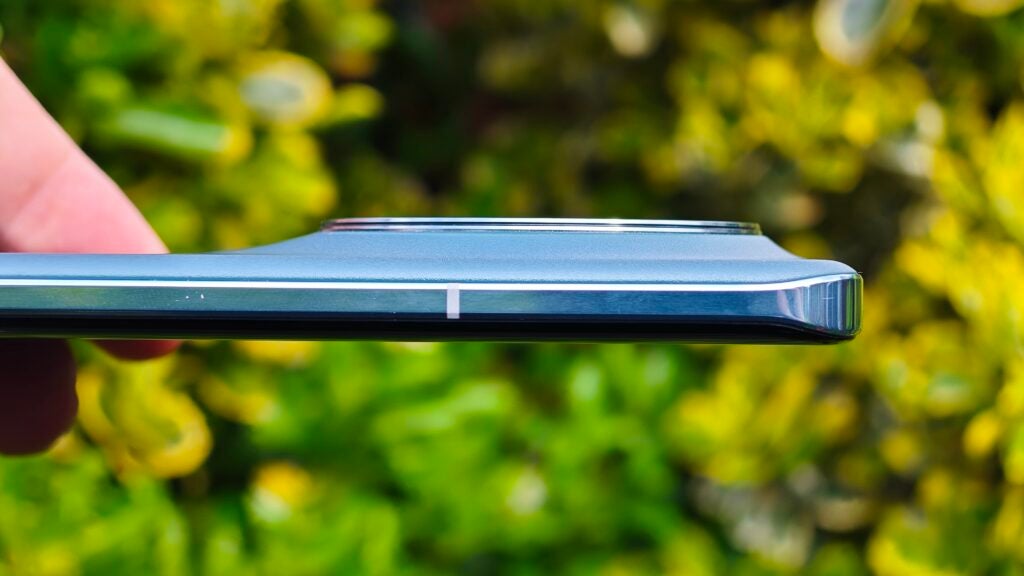
It does, however, feel exceptionally nice in hand, especially compared to boxier flagships like Samsung’s top-end Galaxy S23 Ultra. The Gaudi Curve-inspired camera housing is built directly into the rear of the smartphone rather than using different materials for an overall clean look, in a similar vein to the camera housing of the Oppo Find X5 Pro and Xiaomi 13 Pro.
That camera bump, however, is hard to miss. It takes up around a third of the phone’s rear. In my experience during the review period, it’s the first thing people noticed – and not just friends, but shopkeepers when I’ve used the phone for Google Pay. It’s certainly noticeable, for better or worse, though I’ve grown to quite like it.
It might be down to the fact that the position and raised lip of the rear camera housing allow my finger to comfortably rest around its edge, helping provide a more solid, robust grip when using the phone one-handed. It’s like having a Pop Socket, though not quite as extreme.
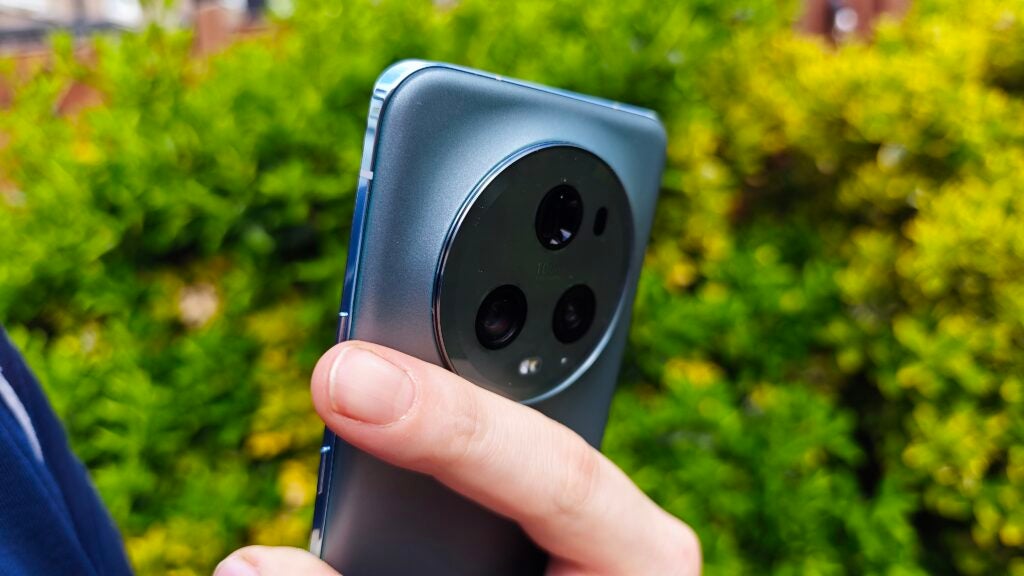
It’s available in two colour options, an understated Black finish and a slightly more attractive Meadow Green, with the latter being a personal favourite of mine. The green glass rear is covered in a frosted finish that helps hide fingerprints, and it complements the matching metal band to further add to its premium look.
In essence, this is a beautiful phone that feels just as premium in the hand as top-end options from Samsung, Xiaomi and Oppo, complete with Gorilla Glass Victus 2 and IP68 water resistance.
You’ll find a power button, volume controls and an IR blaster built into the top of the phone to control TVs and other IR-enabled devices, as well as stereo speakers – though the latter are a little odd.
Rather than being front-facing, the speaker grilles are found on the top and bottom edges of the phone. That’s fine for scrolling through TikTok, but when playing games in a horizontal aspect ratio, your palms tend to muffle the speakers. The lack of a front-facing speaker also makes the phone seem quieter than it is unless you really crank the volume.
That also extends to the phone’s earpiece, which isn’t quite front-facing, so you have to adjust the angle of the phone to clearly hear the recipient – or, alternatively, you can just put the call on speaker. It’s much easier, though not as convenient in public spaces.
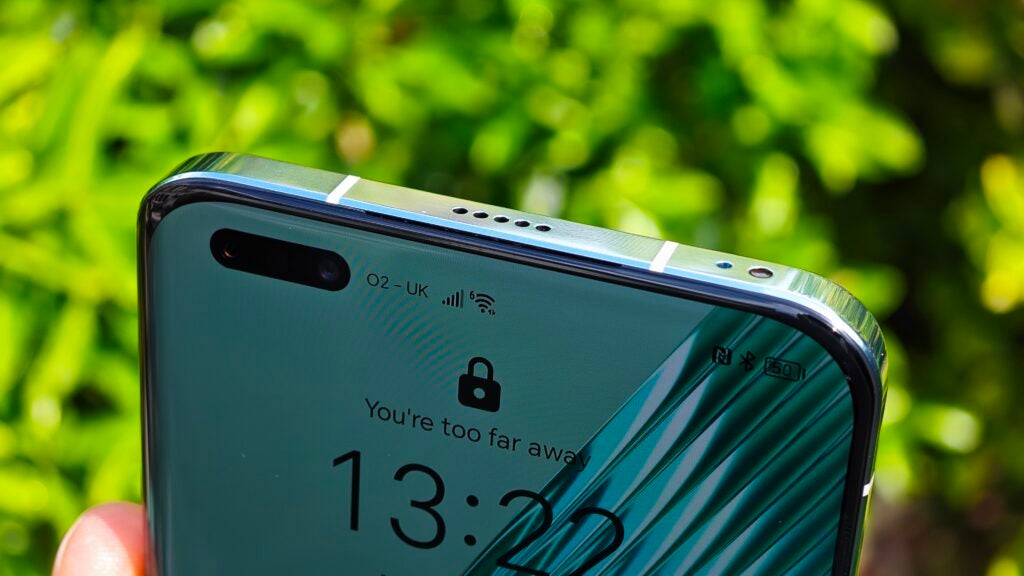
The saving grace is built-in DTS:X Ultra tuning which aims to improve the overall quality of audio both on speaker and when using headphones, with the latter in particular providing a much more realistic spatial soundscape, though not quite to the same level as Apple’s AirPods.
The 6.81-inch OLED display is just as premium. It has a dynamic 120Hz refresh rate, which can be reduced to as little as 1Hz to conserve battery life via LTPO technology. The display is also packed with pixels, clocking in with a resolution of 2848 x 1312.
The size of the display might sound a little too big on paper, especially as I had complaints about usability with the similarly-sized Galaxy S23 Ultra, but the curved design of the frame and display make it feel easier to use one-handed. Sure, it’s still plenty big, but it didn’t feel that it was unwieldy in use.
It also boasts advanced features like 2160Hz PMW dimming that Honor says should make the flicker less obvious and, as such, cause less eye strain when used in the evening – especially combined with Eye Comfort, which significantly reduces the amount of blue light.
Interestingly, the mid-range Honor 90 and its 3840Hz PMW dimming have bested this feature, but I doubt the difference will be noticeable for most people.
Regardless, Honor claims that its display tech can improve melatonin concentration by up to 20%, providing around 30 minutes of extra sleep on average. I am very wary about such wild claims, and it’s almost impossible to quantify without dedicated sleep lab testing, but I will note that I have been sleeping pretty well these past few weeks.
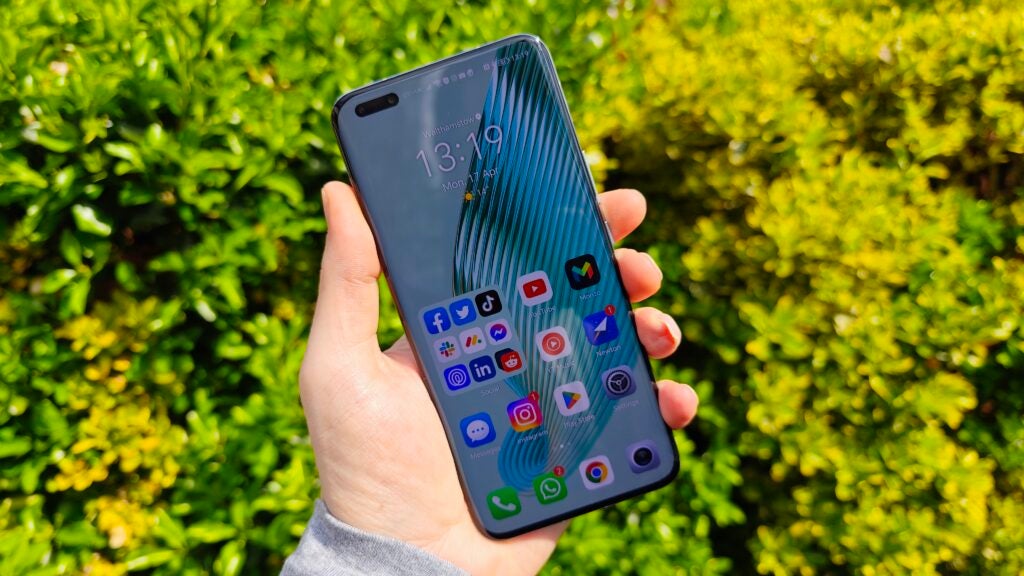
Elsewhere, you can look forward to an impressively bright display at 1300 nits and a boosted 1800 nits when watching HDR content, and with a dedicated display chipset, the phone can upscale SDR content to HDR, and HDR content to HDR10+.
That’s a roundabout way of saying that the display is gorgeously detailed, vibrant with deep blacks and energetic colours no matter if you’re scrolling through social media or watching a movie on Netflix, and it’s bright enough that I’ve had no issue using the phone even in direct sunlight on a bright April afternoon.
The default vibrant colour setting may be a bit much for some tastes, but you can easily enough tailor the colour palette in the settings app.
Cameras
- Falcon Capture takes sharp images of fast-moving subjects
- Decent low-light performance
- Can’t record video using the ultrawide lens
Honor looks to be going all-in with the Magic 5 Pro’s camera setup, comprised of a triple 50MP camera offering split between a main lens, an ultrawide lens and a telephoto lens with a 3.5x optical zoom, though the latter can go all the up to 100x with a periscope digital zoom.
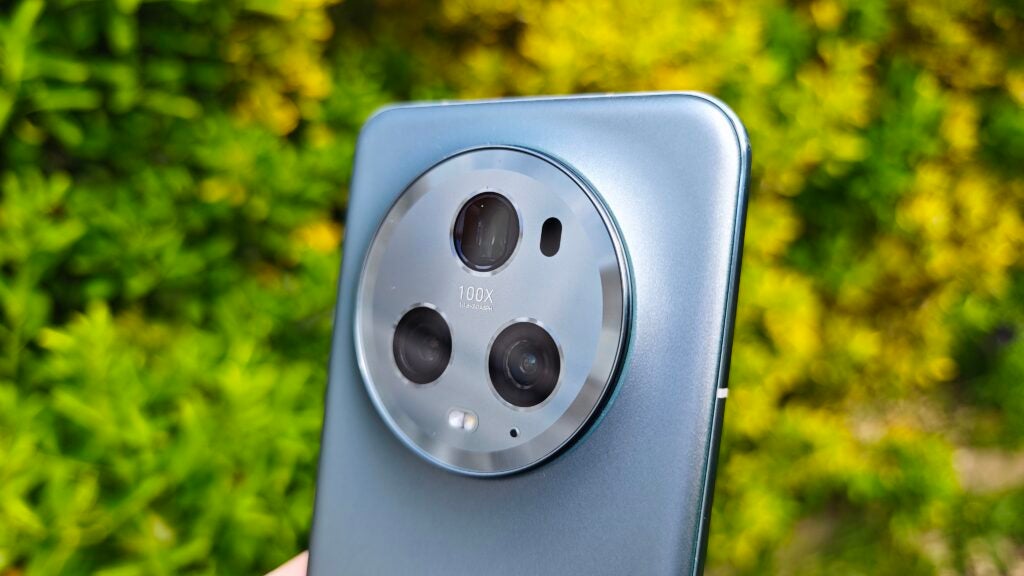
Of course, it’s the main 50MP lens where things are most interesting with an f/1.6 aperture that delivers a natural bokeh in photos and allows for more light capture, especially when combined with a 1/1.12in sensor. It’s not quite as big as the 1-inch sensor of the Vivo X90 Pro and Xiaomi 13 Pro, but it’s still pretty large for a smartphone.
In fact, Honor claims that it’s 35% larger than the Galaxy S23 Ultra and iPhone 14 Pro Max, resulting in 13% and 24% better light intake respectively.
While that’s hard to quantify, I have been impressed with the Magic 5 Pro’s low-light performance, managing to suck in as much available light to capture something more true to life than artificially brightened scenes generated by some alternatives. Just be sure to enable the dedicated Night mode, as images captured on the standard Photo mode aren’t quite as impressive.
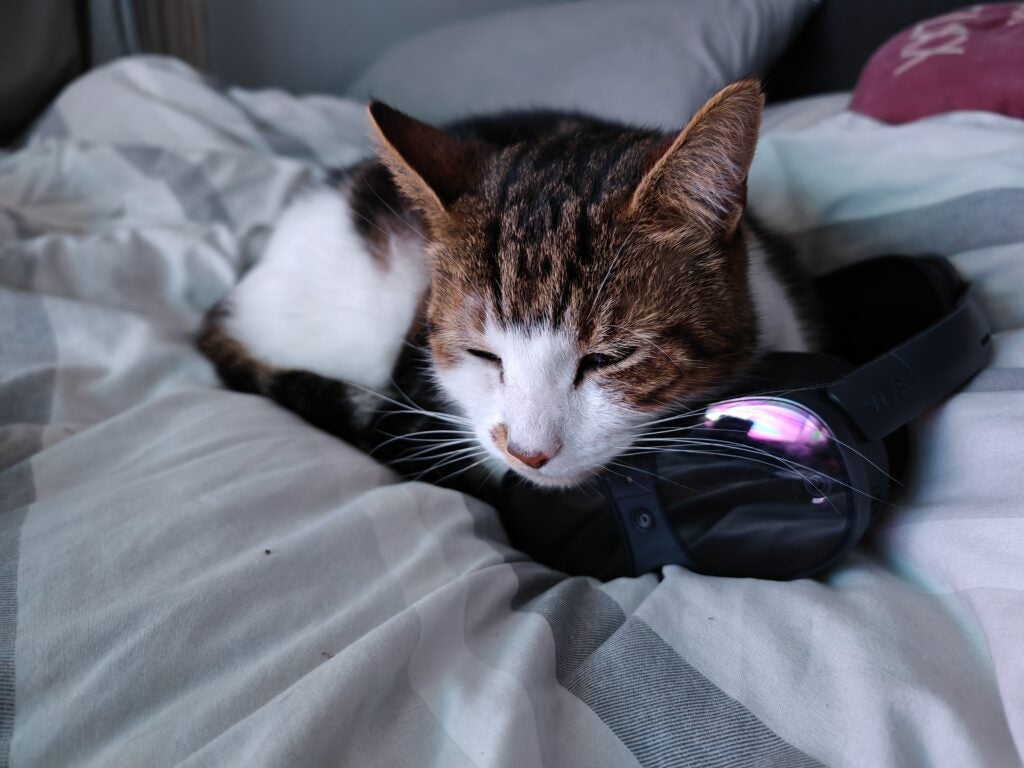
It’s not quite at the level of the Vivo X90 Pro in complete darkness, but it delivers nice balanced shots with some environmental light – like a lamp or a streetlight – available. Things can look a little bit soft in places when zooming in, but they’re more than passable at a surface level.

As light levels improve, the performance only gets better, capturing detailed, vibrant shots in most environments without issue, down to finer details like blades of grass and the fur of a German Shepherd called Luna. The blacks of Luna’s face do look a little darker and crushed compared to real life, though that’s an issue you’ll find on most smartphone snappers capturing in JPEG.


I have, however, noticed that the images can appear a little on the cool side with a notable blue tinge in some shots. It’s nothing that can’t be fixed with a quick edit, but it’s not ideal. Images can also look a little too oversaturated with the AI mode enabled, particularly the greens of grass and the blues of the sky.

Where the main snapper really excels is in the speed of capture, specifically when Honor’s Flacon Capture and AI Motion sensing tech are at play. The mode, available with the tap of a button in the Camera app, takes near-instantaneous images of fast-moving subjects with very little blur – that’s the idea anyway.

It’s not quite as flawless in real-world use, with the phone’s automatic capture sometimes missing the moment by a split second, but I’ve managed to capture perfectly crisp shots of Luna running full speed for her ball – and she’s pretty damn fast. This mode is ideal not only for dogs but children and practically any other fast-moving subject, from cyclists to cars. You’ll need a bit of patience but the results are often worth the effort.


The 50MP ultrawide lens complements the main camera offering, not only matching the 50MP resolution for equally detailed images but the colour profile too. Aside from the angle, it’s hard to tell the difference between shots taken with the main and ultrawide in well-lit conditions. The ultrawide doesn’t suffer from much in the way of distortion at the edges either.

It’s not quite as performative in low-light conditions with an f/2.0 aperture, however, lacking the larger sensor needed for decent low-light performance.
The 3.5x telephoto lens is equal to a 54mm focal length, making it the go-to lens for portrait photography. Edge detection is accurate enough, correctly tracing hairlines and even tackling glasses without issue, and the bokeh adds to the overall look, though you won’t find any fancy portrait filters here like those from the iPhone 14 Pro or Xiaomi 13 Pro.
The periscope design of the 3.5x telephoto lens allows for digital zoom all the way up to 100x, though results at this level are basically unusable, lacking any real kind of detail, and there’s no special moon capture mode like with other periscope lenses either.

Even at a much more manageable 10x you can see a notable loss in detail, especially in finer details like grass and leaves that can look more like large soft blobs than individual strands.

A competitor to the 10x and 100x zoom of the Galaxy S23 Ultra, this is not.
Flip the phone over and you’ll find what looks like a dual camera setup, and looking at the 0.8x and 1x shooting modes in the Camera app further cements this idea, but only one of the selfie cameras is actually used for photography – the other is used for facial recognition, but more on that in a bit.

Quality is decent from the 12MP snapper, making it a go-to option for quick selfies, though it lacks the HDR and autofocus of the rear camera so any serious photography should be limited to the rear lenses.
Video performance is also decent with the ability to capture up to 4K@60fps, though capture should be limited to the main lens with OIS helping smooth out jittery shots. You do have the option of shooting using the telephoto lens, though it’s currently impossible to record using the 50MP ultrawide, and I’m not quite sure why…
Performance
- Top-tier performance from SD 8 Gen 2
- Face ID-level biometrics
- MagicOS 7.1 is easy to get used to
At the heart of the Honor Magic 5 Pro you’ll find Qualcomm’s latest top-end chipset, the Snapdragon 8 Gen 2, paired with 12GB of RAM and a whopping 512GB of storage as standard. The latter is particularly impressive at the sub-£1000 price point considering 512GB variants of other premium flagships like the iPhone 15 Pro Max and Samsung Galaxy S23 Ultra come in at over £1400/$1400.
As you’d expect from the top-end configuration, the Honor Magic 5 Pro had no issue keeping up with just about anything I could throw at it from high-end AAA gaming with maximum graphics enabled to scrolling through media-heavy apps like Twitter without nary a stutter. Apps open instantly, the 120Hz refresh rate helps things feel quick and responsive and image capture is instantaneous too.

That’s no different from any other high-end Snapdragon 8 Gen 2-equipped alternative in 2023, but it’s good to see such high performance here – and without the phone getting uncomfortably hot too.
That’s backed up by benchmarks, with the Honor Magic 5 Pro able to keep up with flagships like the OnePlus 11, Samsung Galaxy S23 Ultra and Vivo X90 Pro in both CPU and GPU tests.
Elsewhere you can look forward to 5G, Wi-Fi 6, Bluetooth 5.2, NFC and an in-display fingerprint scanner. However, Honor takes things a step further with advanced facial recognition similar to that of Apple’s Face ID, using an IR scanner to scan your face to allow access to the phone, and like Apple’s option, it even works in total darkness.
It’s so much more convenient than using the fingerprint scanner while being more secure than the vast majority of Androids that offer basic camera-based facial authentication that can be tricked with a photo or someone that looks a bit like you. Here, you get both convenience and security.
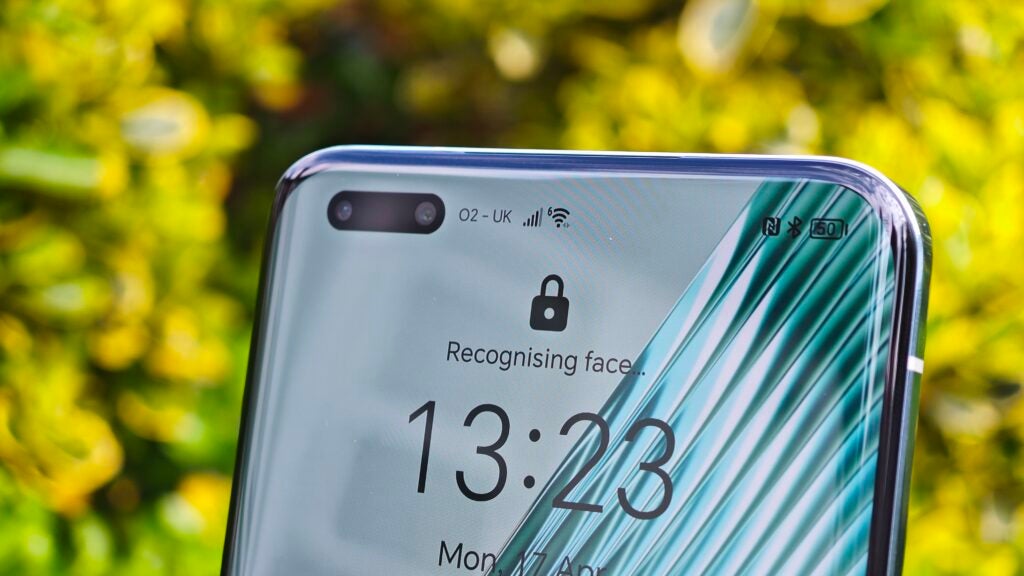
That Face ID-esque camera setup also allows for the inclusion of low-power gesture control that allows you to swipe up or down without touching the screen – ideal if, say, you’re following a recipe and have dirty hands but want to scroll down the page. You can also make a fist to take a screenshot.
Still, it’s rather limited and it isn’t 100% reliable with its gesture recognition, so I’m not sure it’ll be as popular as Honor envisions. It does, at least, use less power than the infamous Soli sensors used in Google’s Pixel 4.
In terms of software, the Honor Magic 5 Pro ships with Android 13 with Honor’s MagicOS 7.1 skin applied on top – though it will be getting an update to Android 14 sometime soon. Still, it’s not a skin that’ll take too long to get used to with minimal changes to the core layout of the phone and its various features, though there are a few notable tweaks that improve the experience.
They include a different take on large folders with the ability to access up to eight apps without opening the folder, and the ability to swipe up on app icons on the Home screen to access shortcuts. The Phone app, for example, will display your favourites with a swipe.
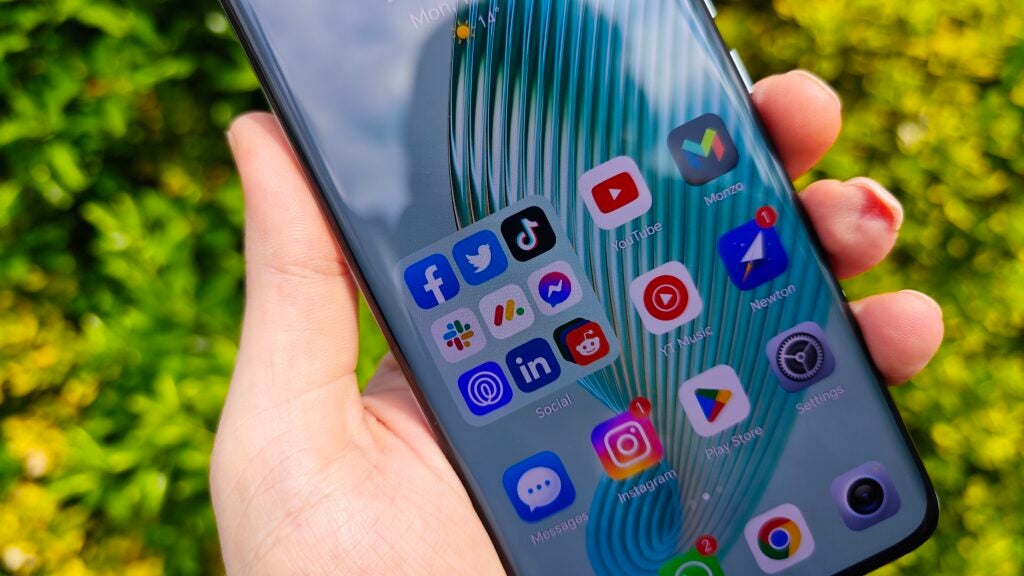
The caveat to the latter is that it’s only available if you decide to display all apps on your home screen, rather than using the app drawer, and I’m not sure that’s something many Android users will want to do. Still, it’s a nice touch that shows Honor is trying to meaningfully enhance the core Android experience rather than change it entirely.
You can also look forward to three OS upgrades and five years of security patches as per Honor’s OS promise.
Battery life
- All-day battery with heavy use
- Two-day battery with light use
- Full charge in just under an hour
Battery performance leads the pack with a battery slightly larger than what you’ll find in most of the flagship Android competition at 5,100mAh, which is a 7.8% increase in capacity compared to last year’s flagship, though with the caveat that the total capacity isn’t available for everyday use – by default anyway.
Instead, 100mAh is reserved for the phone’s ‘Smart Battery Capacity’ feature that allows the phone to finish charging just shy of its peak capacity to extend the battery’s lifespan, though you can decide to disable the tech and use the total 5,100mAh battery capacity in the Settings app.
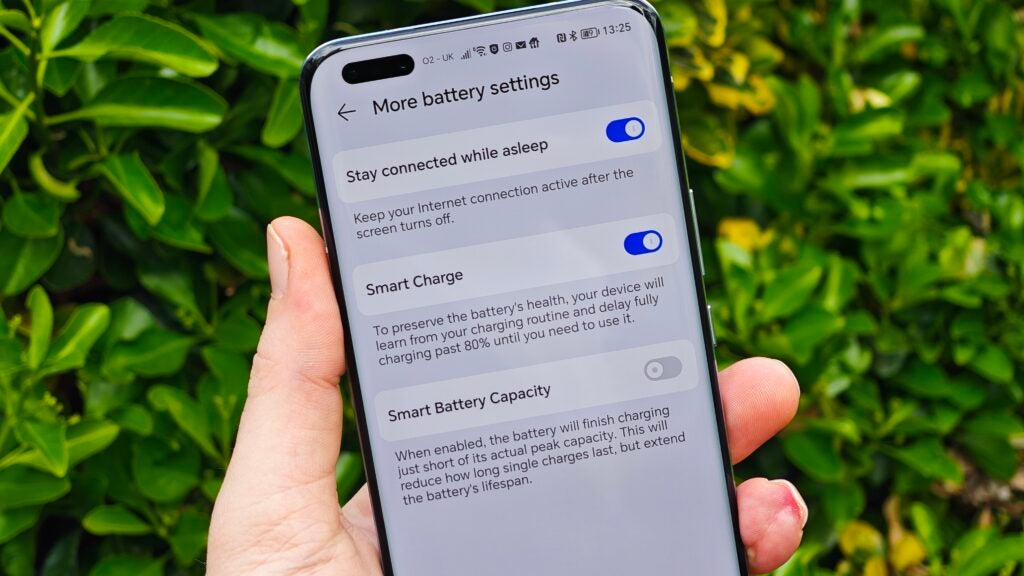
That said, even without that last 100mAh handy, the Honor Magic 5 Pro has absolutely no issue lasting all day on a single charge with a heavy mix of texting, scrolling, listening to music and gaming, with the phone usually getting to the end of a 16-hour day with around 40% charge left.
On days with lighter usage – like when working from home – that jumped up to around 60% on average, with no real issue lasting two days before needing a top-up with such casual use, though heavier use saw the battery run flat at around 6pm on the second day.
That’s backed up by benchmark testing too, with the Magic 5 Pro draining just 5% of battery with half an hour of casual gaming and 8% in an hour of HDR Netflix streaming.
Charging isn’t the fastest around at 66W, especially with such a large capacity battery, and that’s reflected in testing. I found that though it’d regain 50% charge in just 20 minutes, a full charge took just shy of an hour – pretty slow compared to the 120W charging of the 5,000mAh Xiaomi 13 Pro that delivers a full charge in just 24 minutes. The fast 66W charger does come in the box, at least.
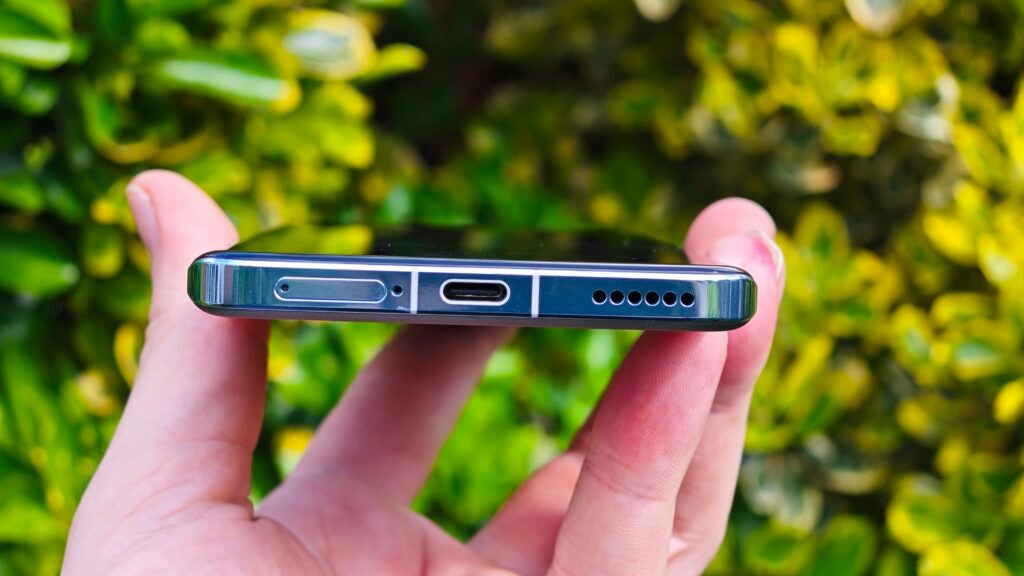
It also boasts 50W wireless charging, though you’ll need Honor’s Wireless SuperCharge base to take advantage of such speedy charging capabilities.
Take a look at the below to see how the Honor Magic 5 Pro compares to the high-end competition:
Should you buy it?
You want a capable all-rounder
The Honor Magic 5 Pro ticks most boxes, from excellent performance to a high-end display and long battery life.
You want the best periscope zoom lens
While the Magic 5 Pro is capable of 10x and 100x digital zoom, results aren’t as good as those from the Galaxy S23 Ultra.
Final Thoughts
The Honor Magic 5 Pro is an excellent all-in-one package with features that rivals some of the most popular smartphones on the market at a much lower price, coming in at just £949 with a whopping 512GB of storage onboard.
It ticks most of the boxes for what a premium smartphone should offer, including an attractive design, bright display, top-end performance, all-day battery life and capable cameras, with extras like 2160Hz PMW dimming and AI-powered Falcon Capture helping separate it from the competition.
It doesn’t always succeed – the 10x zoom isn’t quite as capable as that from Samsung’s Galaxy S23 Ultra and charging isn’t as fast as the Xiaomi 13 Pro – but there’s certainly a lot to like about Honor’s 2023 flagship.
FAQs
The Magic 5 Pro offers full IP68 water resistance that should survive a dunk for up to 30 minutes in 1.5 meters of water.
Honor has committed to three OS upgrades and five years of security updates with the Magic 5 Pro.
Jargon buster
mAh
An abbreviation for milliampere-hour and a way to express the capacity of batteries, especially smaller ones in phones. In most cases the higher the mAh, the longer the battery will last but this isn’t always the case.
IP rating
An abbreviation for ‘Ingress Protection Code’, which lets you know to what extent a device might be waterproof or dustproof.
IP68
The most popular and useful level of water resistance. Usually means a device can withstand dust, dirt and sand and be submerged in 1.5m of water for 30m however this can sometimes vary. Read more in our IP68 guide for more.

